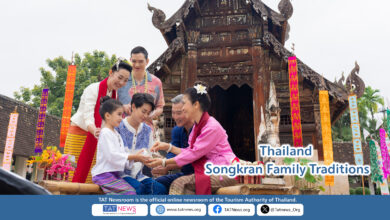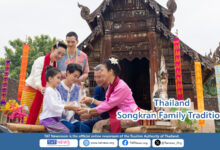Thailand’s Northeast region, or Isan, showcases a rich French architectural heritage well worth the time of any traveller to the region.
The redevelopment at the end of the 19th century and in the early years of the 20th century of towns along the Mekong River by French engineers did not go unnoticed on the Thai side.
Most of the official structures built during the time of King Rama V the Great and King Rama VI were designed in the European style, often imitating the French design and construction. European architecture was en vogue in the Kingdom but along the Mekong River, it was also a sign of development and modernity for Siamese provincial towns.
Some of these structures survived today and are well worth a look for any visitor to the region. In Nong Khai, the former Provincial Hall was built in 1897. It served as a residence for the Governor from 1929, when a new structure was built. The mansion is set in a park and has been turned into the Nong Khai Provincial museum since 2006. It is a grand style mansion with typical French embellishments including shutters and high windows. Around the former Provincial Hall, there are also a few old wooden houses with picturesque European influences.
On the way to Sakon Nakhon, travellers should have a look around Udon Thani International Airport. Along Pho Si Road, stands one of Thailand’s most beautiful European-style buildings. The majestic structure with its arcades and large pediment has an Italian feel. The building used to be a school before being turned into a museum. It displays exhibits from Udon Thani’s history, archaeology, natural science, geology, folk history plus arts and culture.
Sakon Nakhon lies 160 kilometres from Udon Thani on the Mekong River tourism trail. Tha Rae village is one of the best preserved European-style provincial centres in Thailand. It is close to the border of Nakhon Phanom province and 20 kilometres away from Sakon Nakhon town. The village was created around 1884 by a group of some 150 Roman Catholic Vietnamese immigrants fleeing persecution in the then French Indochina.
They help build a huge church, St. Michael the Archangel Cathedral to serve a community that numbers over 10,000 parishioners. It is surrounded by houses built in typical French Indochinese style with arcades, balconies and windows typical of Southern France.
Every year during December, Ban Tha Rae turns into the Mekong region’s most pictorial Christmas village, with residents decorating their homes with stars and Christmas trees.
Nearby Nakhon Phanom province has the largest number of European-style buildings. The city located on the Mekong River has been a centre of trade for many years.
Nakhon Phanom’s strategic location has turned the city into an attractive settlement for many ethnicities including waves of Vietnamese immigrants.
Their most visible legacy can be found in the Nakhon Phanom city centre. Streets are aligned with a range of old houses in the Indochinese style, offering Old World charm with their arcades, balconies and stucco. They stand around the Vietnam Memorial Clock Tower built in 1960. These days, the old town is revitalised with a lively night market and many bars and trendy restaurants housed in the many repurposed older houses.
Like in Nong Khai, the surrounding neighbourhood has many official structures bearing a distinctive European or French style.
The Governor’s residence, today a museum, is also worth visiting as it tells about the development of Nakhon Phanom. The former city hall, today the Queen Sirikit Library, was built in the style of an Italian mansion. Other European-style structures were built during the reign of King Rama V the Great and include the Sunthorn Wichit School with its classical arcades, villas for public servants along Sunthorn Wichit Road as well as St Anna’s Church (1926) that were also inspired by art deco style en vogue across French Indochina until the late 1950s.
Last but not least, do not miss Ban Na Chok Village, home for a dozen years of Vietnamese revolutionary hero and the first President of then North Vietnam Ho Chi Minh. His small wooden house and garden can be visited, as it is now a memorial and museum to the father of modern Vietnam. It is five kilometres away from Nakhon Phanom city centre.
About the Author
This is the final article of the five-part story on European architectural heritage in Thailand written by Luc Citrinot, a freelance journalist and consultant in tourism and air transport with over 20 years’ experience. The views and opinions expressed in this article do not necessarily represent those of the Tourism Authority of Thailand (TAT). Therefore, TAT is not responsible for the accuracy or reliability of information written by this writer.













